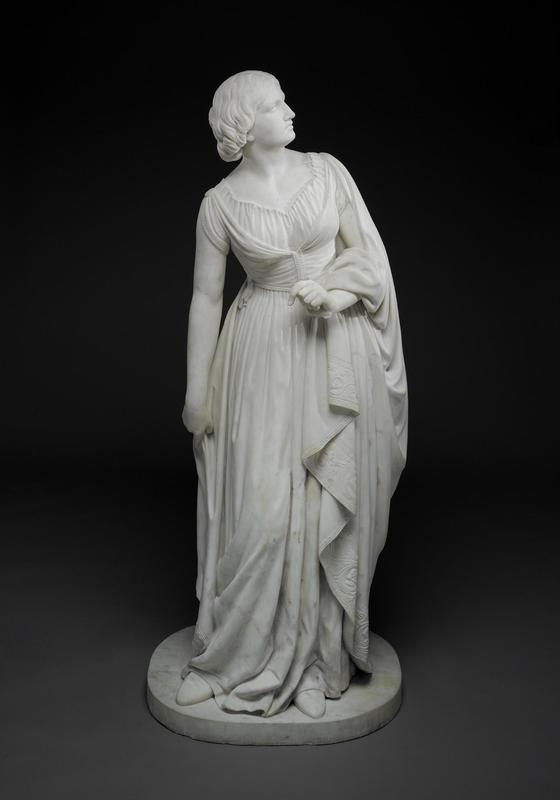More about Lady Godiva

Contributor
Anne Whitney outdid herself with Lady Godiva, confirming her art-rebel status by depicting the bold lass without her famed steed.
Even Dalí, king of the bizarre, opted for a more conventional depiction of Godiva, complete with horse and nude rider.
Faced with this regal marble affair, it’s hard to believe the stories that Anne Whitney first turned to sculpting while casually shaping wet sand. Plenty of us grew up building sand castles, and few have made the leap to life-size sculptures of rebellious 11th century nobles. Although Michelangelo would probably resent the lack of nudity here, we’ve got to hand it to Whitney for reminding us that Godiva’s more than a Queen lyric or chocolate brand.
Godiva herself was quite the character. Legend has it her husband, Earl Leofric, taxed his people heavily. With no Robin Hood to even the score, Godiva took action: Leofric agreed to end his tyranny if Godiva rode naked through the streets. A bit kinky for the middle ages, no? This is the moment Whitney chose to sculpt: Godiva steels her resolve and prepares to disrobe. The only twist to an otherwise PG narrative is the original Peeping Tom, the only villager to steal a glimpse of the risqué ride. He was allegedly rewarded for his bravado with blindness or death. Hey, at least he didn’t have to pay his taxes!
Unfortunately, historians once again ruin the fun. The story Whitney brought to life is likely mere fairy tale. Many believe Leofric was the honest and powerful ‘Hammer of the Welsh,’ a rather fearsome title for one who may have considered naked equestrian bets in legal decisions.
It’s hard to imagine Lady Godiva as a failure, but the sculpture caused Whitney no end of grief. Unable to sell it, Whitney gifted the marble work to a friend and wrote her sister to smash the original plaster in her Boston yard. A tad dramatic, Whitney requested the pieces be “given to the land,” a request Sarah ignored like any doting sibling would. Before the marble version was brought to Dallas, it had been sitting unnoticed in a Massachusetts garden. The moral to the story? Check your backyard— you might have an antique sculpture of a lady from Coventry lazing about the zucchinis.
Sources
- Curtis, Cathy. “ART : Unearthing a Buried Treasure of Women's Sculpture : Laguna Beach artist Charlotte Streifer Rubinstein's latest book puts the spotlight on a number of American artists from the past whose works have been ignored.” Los Angeles Times.
- “The Dallas Museum of Art Announces the Acquisition of Lady Godiva, an Anne Whitney Sculpture.” Dallas Museum of Art. Accessed June 9, 2017. https://www.dma.org/press-release/dallas-museum-art-announces-acquisiti….
- “Lady Godiva.” Dallas Museum of Art. Accessed June 9, 2017. https://www.dma.org/collection/artwork/anne-whitney/lady-godiva.
- “Lady Godiva.” Wikipedia. May 23, 2017. Accessed June 9, 2017. https://en.wikipedia.org/wiki/Lady_Godiva.
- “Lady Godiva with Butterflies.” The Dalí Universe. Accessed June 9, 2017. http://www.thedaliuniverse.com/en/sculpture-for-sale/lady-godiva-butter….
- “Leofric, Earl of Mercia.” Wikipedia. March 20, 2017. Accessed June 9, 2017. https://en.wikipedia.org/wiki/Leofric,_Earl_of_Mercia.
- Musacchio, Jacqueline Marie. "Mapping the “White, Marmorean Flock”: Anne Whitney Abroad, 1867–1868." Nineteenth-Century Art Worldwide 13, no. 2 (2014). Accessed June 9, 2017. http://www.19thc-artworldwide.org/autumn14/musacchio-anne-whitney-abroad.











